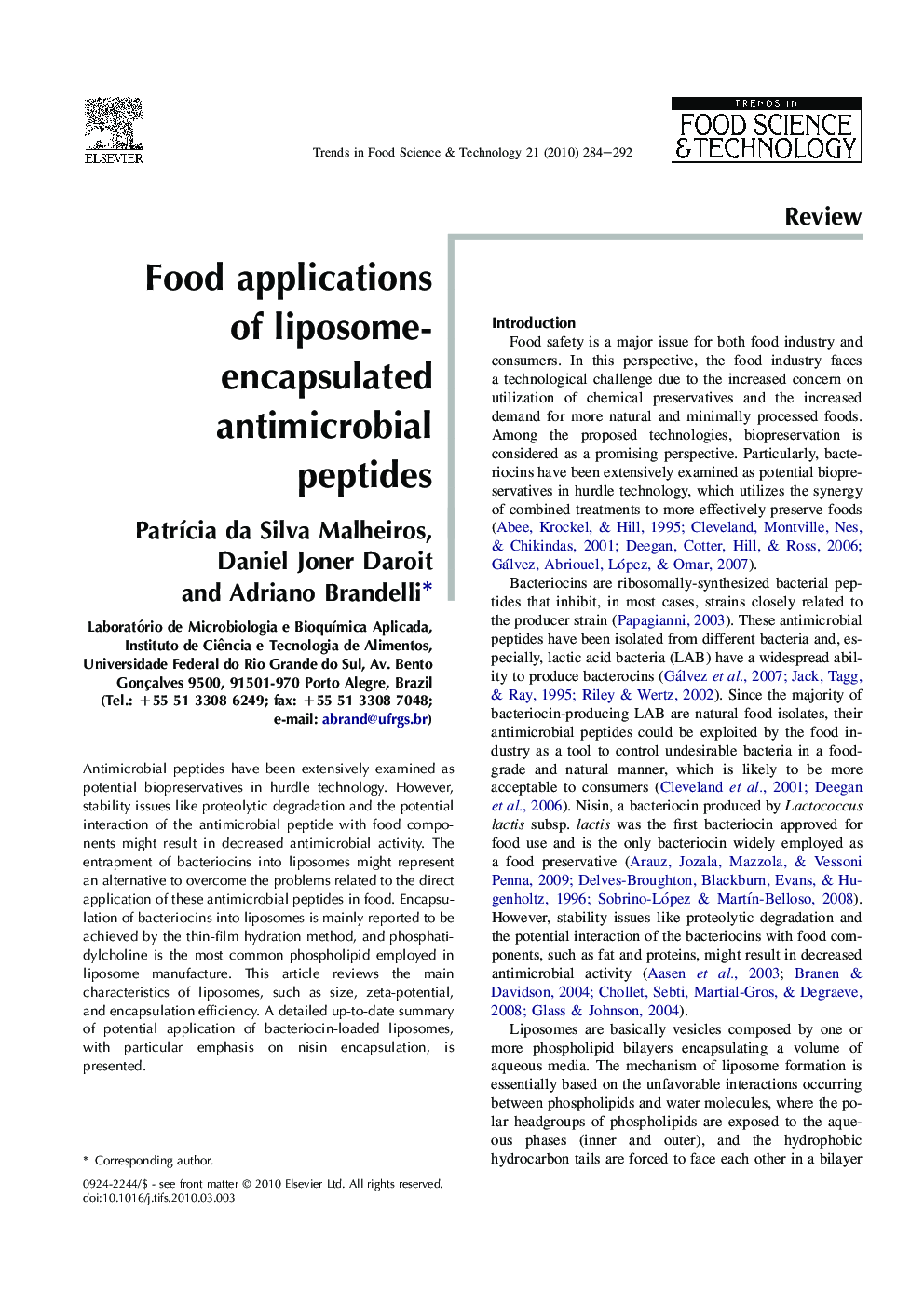| Article ID | Journal | Published Year | Pages | File Type |
|---|---|---|---|---|
| 2098989 | Trends in Food Science & Technology | 2010 | 9 Pages |
Antimicrobial peptides have been extensively examined as potential biopreservatives in hurdle technology. However, stability issues like proteolytic degradation and the potential interaction of the antimicrobial peptide with food components might result in decreased antimicrobial activity. The entrapment of bacteriocins into liposomes might represent an alternative to overcome the problems related to the direct application of these antimicrobial peptides in food. Encapsulation of bacteriocins into liposomes is mainly reported to be achieved by the thin-film hydration method, and phosphatidylcholine is the most common phospholipid employed in liposome manufacture. This article reviews the main characteristics of liposomes, such as size, zeta-potential, and encapsulation efficiency. A detailed up-to-date summary of potential application of bacteriocin-loaded liposomes, with particular emphasis on nisin encapsulation, is presented.
